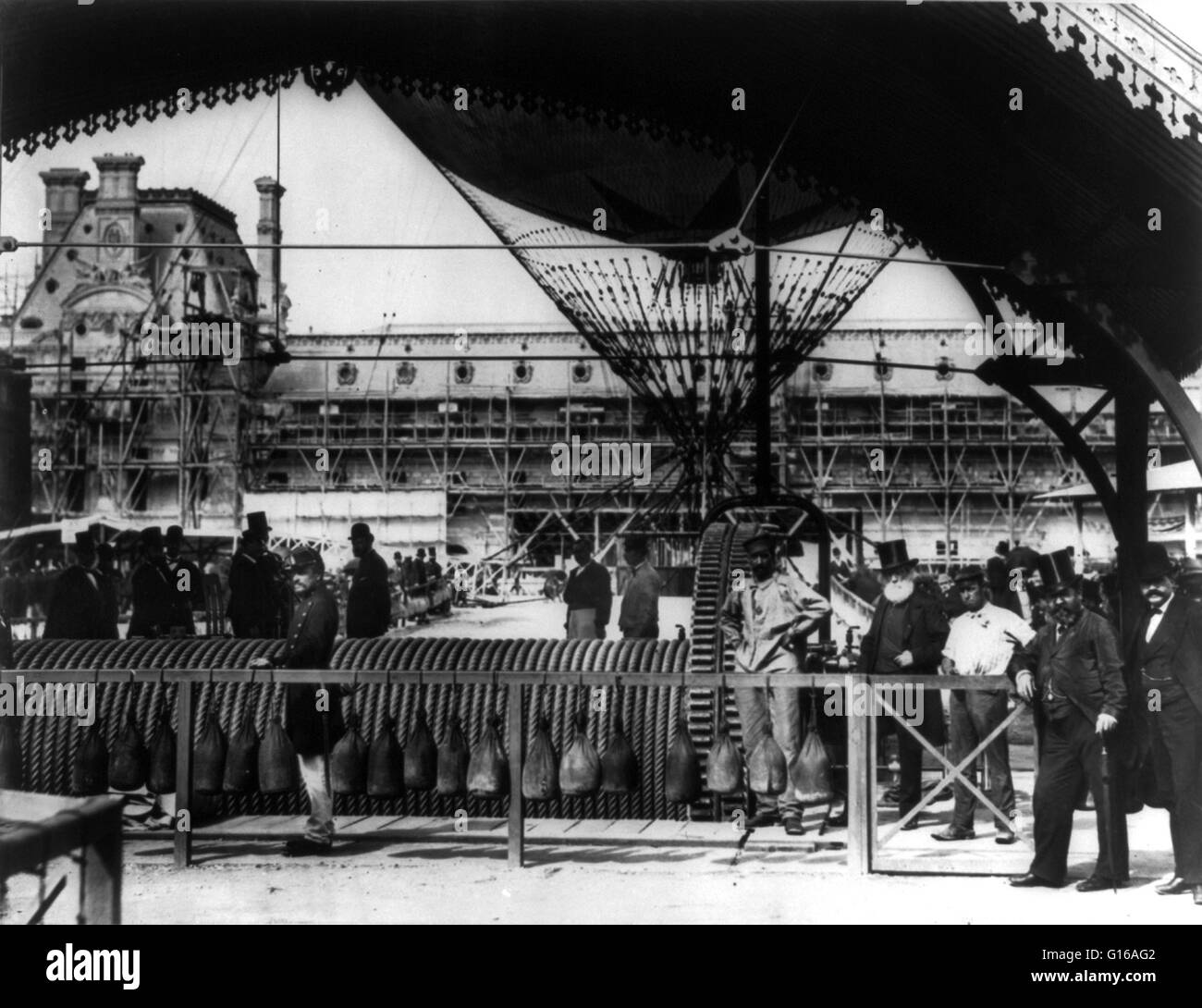Machinery for hauling the giant captive balloon constructed by Henri Giffard, 1878. Henri Giffard (February 8, 1825 - April 14, 1882) was a French engineer. He invented the injector and the Giffard dirigible, an airship powered with a steam engine, and we

Image details
Contributor:
Science History Images / Alamy Stock PhotoImage ID:
G16AG2File size:
44.6 MB (1 MB Compressed download)Releases:
Model - no | Property - noDo I need a release?Dimensions:
4500 x 3462 px | 38.1 x 29.3 cm | 15 x 11.5 inches | 300dpiPhotographer:
Photo ResearchersMore information:
This image could have imperfections as it’s either historical or reportage.
Machinery for hauling the giant captive balloon constructed by Henri Giffard, 1878. Henri Giffard (February 8, 1825 - April 14, 1882) was a French engineer. He invented the injector and the Giffard dirigible, an airship powered with a steam engine, and weighing over 400 pounds. It was the world's first passenger airship (then known as a dirigible). Both practical and steerable, the hydrogen-filled airship was equipped with a 3 hp steam engine that drove a propeller. The exhaust steam was mixed in with the combustion gases and it was hoped by these means to stop sparks rising up to the gas bag. He also installed a vertical rudder. On September 24, 1852 he made the first powered and controlled flight traveling over 16 miles from Paris to Trappes. He was able to make turns and circles, proving that a powered airship could be steered and controlled, but it was too slow to be effective. He was granted a patent for the injector in 1858. In 1878, he built a captive spherical balloon with a capacity of 25 liters, and a gondola accommodating 40 passengers. It was used to take aloft visitors at the International Exhibition in Paris. In response to his declining eyesight, he committed suicide in 1882, at the age of 57, leaving his estate to the nation for humanitarian and scientific purposes. His is one of the 72 names of scientists inscribed on the Eiffel Tower.